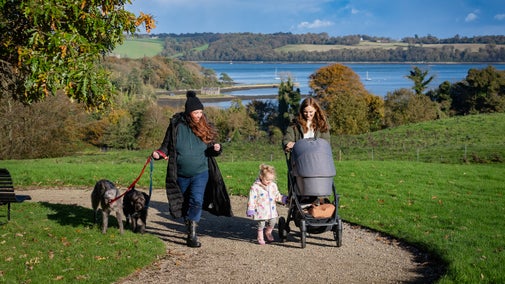
Explore countryside and woodland
Get closer to nature and explore hundreds of outdoor places. We've got miles of hillsides and woodland waiting to be discovered.

Discover the best places in our care for winter wildlife watching. See birds arriving for the winter months, woodland residents hopping through bare trees, and shy coastal creatures emerging on quieter beaches.



Get closer to nature and explore hundreds of outdoor places. We've got miles of hillsides and woodland waiting to be discovered.

Find out about the best places across England, Wales and Northern Ireland to see the elusive red squirrel. Autumn is a great time to spot them as they're busy gathering food ahead of winter.

Forest bathing is a mindfulness practice developed in Japan that's gained popularity in the UK. It involves being immersed in nature and using sight, smell and touch to slow down the mind and relax.

We look after some of the UK's most important nature reserves, and therefore a wide range of wildlife and plantlife. Discover the best ones to visit near you.

There are three types of hare in the UK – brown, mountain and Irish. Find out the best places to see the ‘mad March hare’ and their boxing ritual.

Find out more about the best places where you can see otters in the wild, including Hampshire, Pembrokeshire and Cornwall.

Find the best places across England, Wales and Northern Ireland to spot seals in the wild. Whether you're on a coastal walk or boat trip, there are plenty of places to see both grey and common seals as they come ashore to give birth.

Discover wildlife, woods and wide open spaces when you visit one of these large parklands. Walk, cycle, picnic, play or simply relax in nature.

Go on a family-friendly walk with these trails suitable for buggies and children. Go wild in natural play areas and compete in woodland den building.